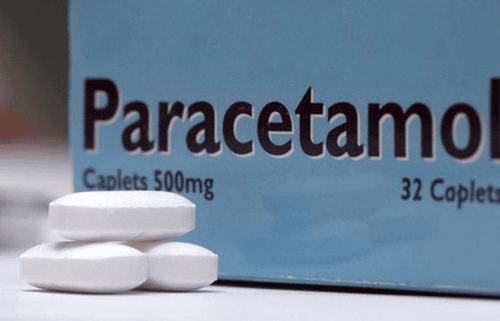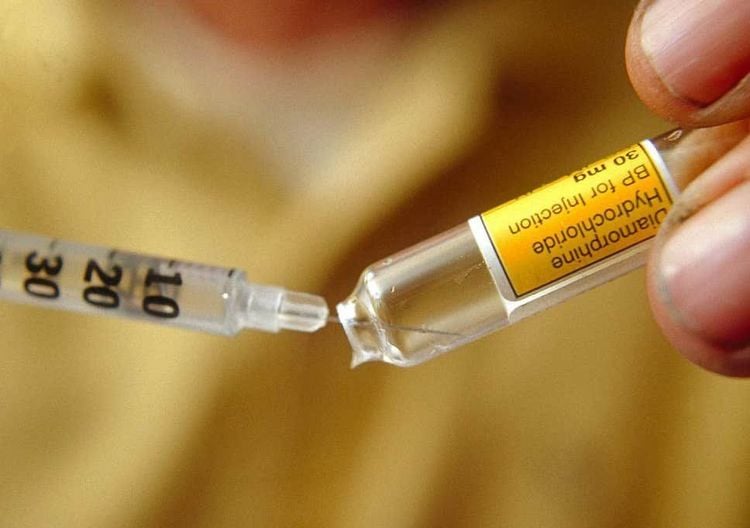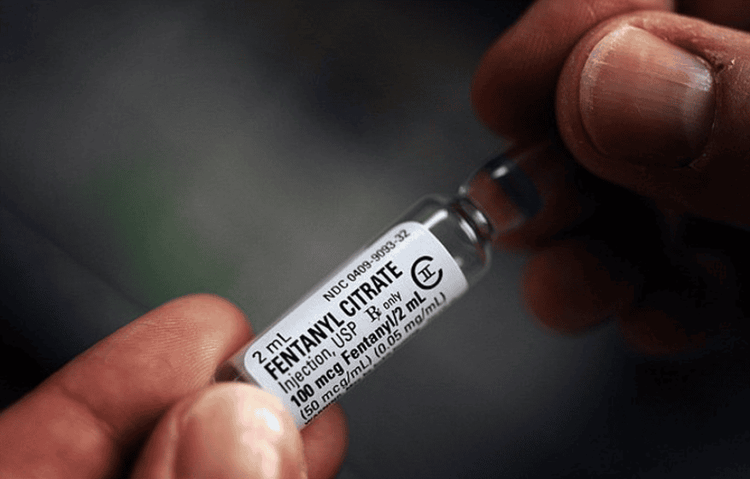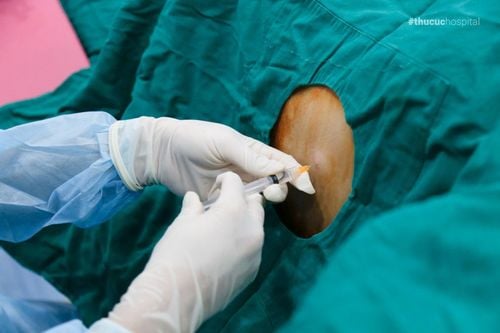This is an automatically translated article.
The article was professionally consulted by Pharmacist Nguyen Thi Linh - Vinmec Danang International General Hospital.Painkillers after cesarean section help mothers reduce the pain caused by cesarean section, but it is necessary to ensure that pain relievers after cesarean section are less excreted in breast milk and have little effect on the newborn.
1. How to choose pain reliever after cesarean section?
During the first 3 months after a cesarean section, the mother will face more abdominal pain than the mother giving birth vaginally. For about 6 months after a cesarean section, up to 60% of mothers experience pain in the wound. In addition to the pain of the incision, the mother also has to deal with back pain and pain in the perineum.The choice of pain reliever after cesarean section for the mother is based on the following factors:
Safe for mother and breastfed baby. Ensure that the mother can walk, exercise gently and stay awake so that she can take care of the baby. It depends on the mother's medical condition, medical history, and the severity of the pain.
2. How are pain relievers after cesarean section used?
2.1 Guidelines for the use of analgesics after cesarean section according to the Oxford Handbook of Practical Drug Therapy - Duncan Richards and J. K. Aronson (Oxford University Press 2005) Based on the severity of pain, the following types of wound analgesia are used:Mild pain: paracetamol Mild - moderate pain: paracetamol plus mild opioid (codeine, dihydrocodein) Moderate - severe pain: paracetamol, NSAID and mild opioid (codeine, dihydrocodein) Severe pain: NSAID and opioid Very severe pain: NSAID and morphine (depending on the patient) Extreme pain: opioid epidural and local anesthesia

Thuốc paracetamol dùng giảm đau sau đẻ

Thuốc diamorphine được dùng tiêm tủy sống

Thuốc Fentanyl
Acetylsalicylic acid: This is a drug made in the form of enteric-soluble tablets. Acetaminophen (paracetamol): The drug has analgesic effect but does not have anti-inflammatory properties and causes few side effects. Maximum dose 4g/day. Ibuprofen: This pain reliever after cesarean section is taken orally at a dose of 400mg in the first 72 hours after surgery, taken every 4-6 hours. Naproxen: Long-acting drug due to its slow half-life. Ketoprolac: This is an injection (intramuscular) that is used to get rid of other pain relievers. Trisalicylate: This drug has less effect on the digestive system and platelets than aspirin. Indomethacin: This drug works on the digestive system. Tramadol: The drug has a strong analgesic effect and rarely causes respiratory depression as a side effect.

Sử dụng thuốc giảm đau sau đẻ mổ cần tuân thủ theo y lệnh của bác sĩ
3. Some measures to help breastfeeding mothers reduce pain after cesarean section
In addition to being indicated for the use of pain relievers mentioned above, some measures to note the following also contribute to helping mothers reduce pain after cesarean section:Lie on your side while sleeping and resting: To quickly recover the body For about 2 months after giving birth, the mother should sleep on her side, and rest, can use an extra pillow to prop her back. Especially right after giving birth, lying on your side while breastfeeding will help the mother reduce the pain caused by the contraction of the uterus, and reduce the feeling of nausea and headaches. During this period, the mother needs to spend a lot of time resting, when lying down, she should also lie on her side to create a sense of comfort and limit the impact of the incision. Gentle exercise: Gentle exercise after surgery helps blood vessels circulate, avoids hematoma, and helps the body quickly recover, and reduces pain after cesarean section. Do not exercise too much: After a cesarean section for about 2 months, the mother should not exercise too much or too hard, because at this time the muscles in the abdomen are still weak. Vigorous exercise or overwork after cesarean section can affect the incision, causing dangerous complications.

Sử dụng dịch vụ thai sản trọn gói tại Vinmec là sự lựa chọn của nhiều chị em hiện nay
Vinmec International General Hospital applies the painless delivery method with a team of professional anesthesiologists and resuscitators, so pregnant women will no longer have to struggle with pain. For pregnant women who have had a caesarean section, they will be numbed by an ultrasound machine to treat pain after surgery. The results of the most recent evaluation of pain relief showed that: All pregnant women who gave birth by cesarean section did not have to use morphine, and postpartum pain when moving and living was almost no longer recorded.
Please dial HOTLINE for more information or register for an appointment HERE. Download MyVinmec app to make appointments faster and to manage your bookings easily.













